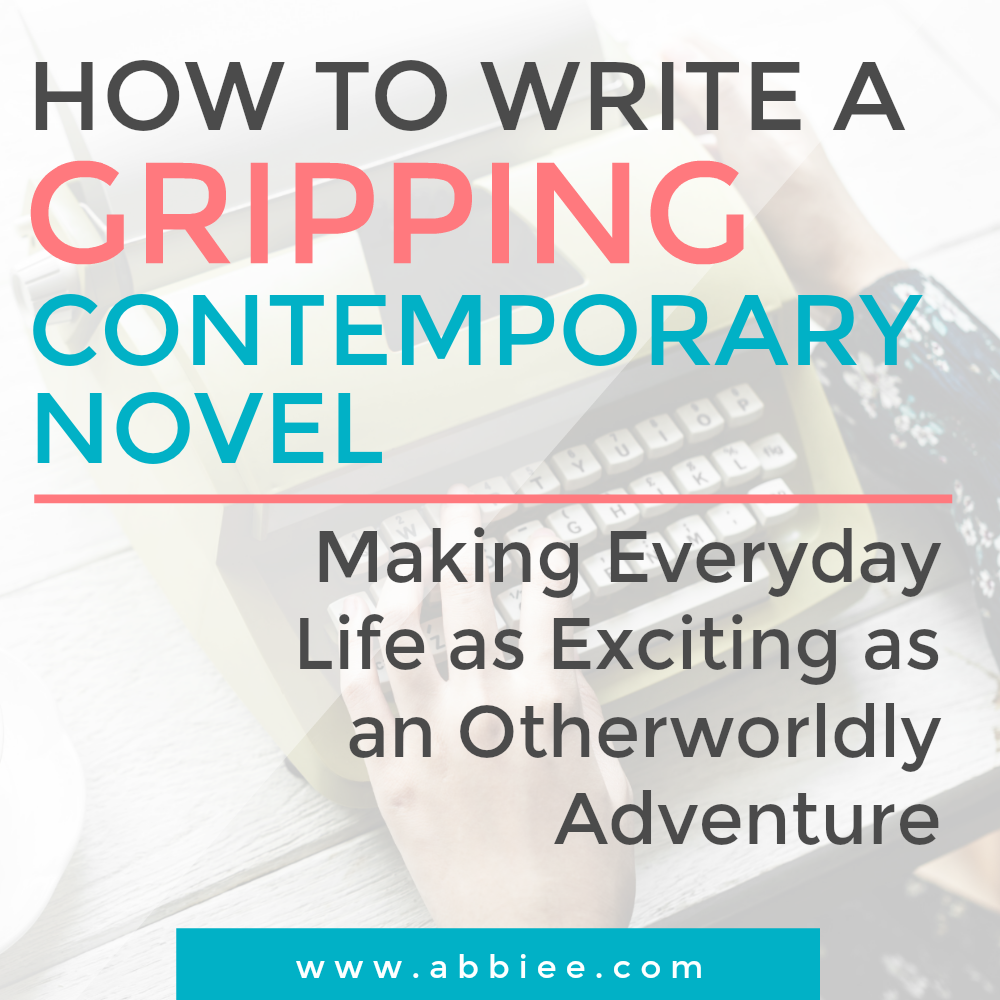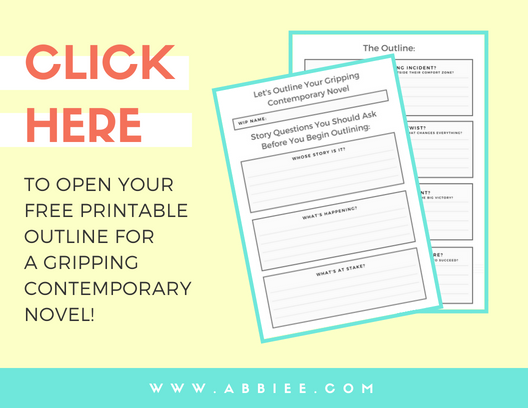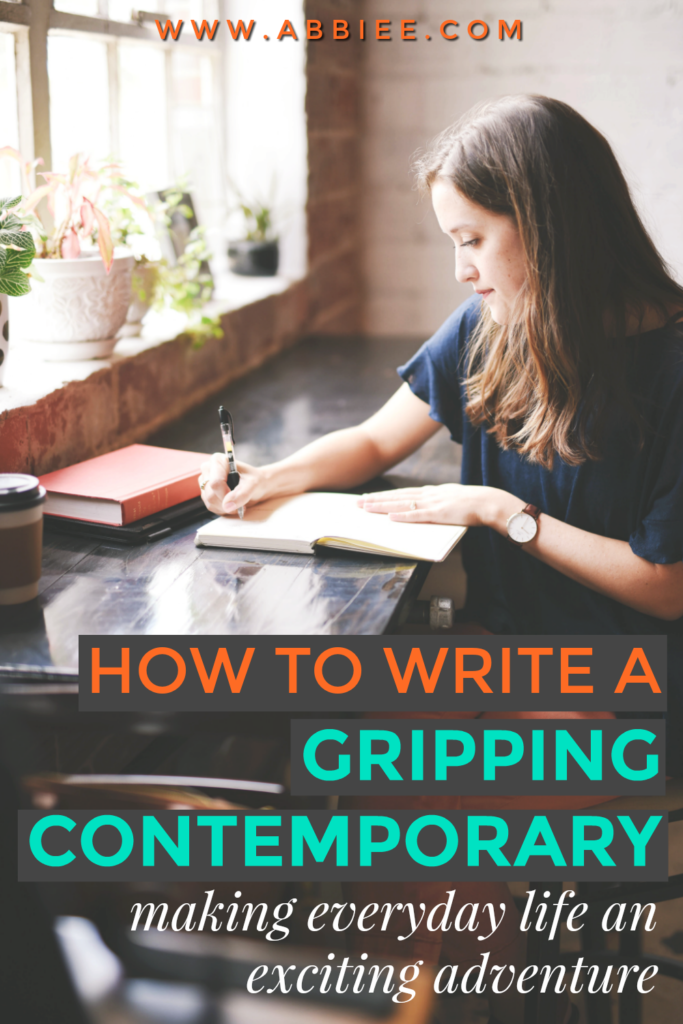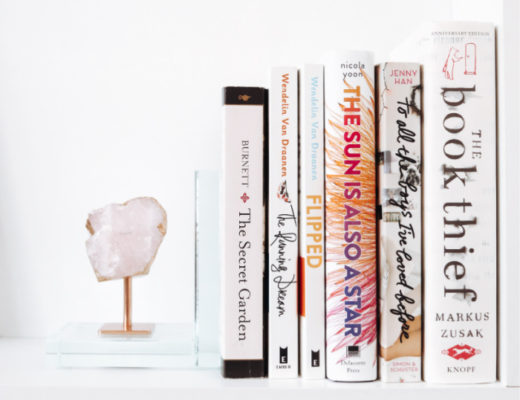I am in love with everyday life. More specifically, I’m in love with writing about everyday life — otherwise known as a contemporary novel. Although I’ve dabbled in other genres (and I’m currently plotting future books of various different genres) I always find myself going back to contemporary, both as a reader and a writer. Why? Because there’s something truly gripping about everyday life.
But in the writing world, it doesn’t seem so. Contemporary novels have garnered a reputation of being simple, mellow, and highly character-driven. THIS IS A GOOD THING! But sometimes as a writer of contemporary, I feel like I’m missing out on a “big adventure.”
When I read articles about story structure, I notice that a lot of it centers around The Hero’s Journey™, The Protagonist VS The Antagonist™, and The Big Climax™…but many of these plot devices don’t occur in contemporary. I’ve written novels where there is no hero’s journey, no antagonist, and no big climax. So does that mean it’s not a gripping story?
ON THE CONTRARY. I believe that story isn’t about “what happens” (the big adventurous plot) — it’s about how the plot affects the protagonist and causes them to change. The plot isn’t the story — it’s just the clever vehicle that delivers the emotional punch to the reader. I believe that story is something that happens emotionally, not just physically. You might be writing an epic science fiction adventure filled with action and suspense, but have no true story. And, similarly, you might be writing a simple “everyday life” contemporary driven by characters and relationships and have A REALLY GOOD STORY RIGHT THERE. I cannot say this loud enough:
STORY AND PLOT ARE NOT THE SAME THING.
If you think that “plot” is what makes a book exciting and gripping, YOU ARE MISTAKEN. It’s not about what happens on the outside; it’s about what happens on the inside. What happens to us, the readers. With every good story, EMOTION takes center stage. This is also the reason why you don’t need to be a “good writer” to be a good storyteller.
So if you write contemporary and have a hard time resonating with story structure that talks about The Hero’s Journey™, The Protagonist VS The Antagonist™, and The Big Climax™, SETTLE IN AND GET COMFY. Today’s post is for you. I’m going to show you exactly how I translate common writing advice and story structure into a roadmap that works for writing a contemporary novel. And, at the end of this post, you can grab a free printable that will help you kickstart your next contemporary novel outline!
STORY SIZE DOESN’T MATTER
Before we begin, you have to understand that STORY SIZE DOESN’T MATTER. What do I mean by that? Just because someone else’s story has a massive, adventurous, intricate plot doesn’t make it better. When we dig down to the emotional root of every story, all the “extra stuff” falls away. Take these two stories for example: The Wizard of Oz and It’s A Wonderful Life. They both have very different plots, but nearly the same internal theme:
THE EXTERNAL PLOT:
The Wizard of Oz is a story about Dorothy, a young girl who is swept away from her farm in Kansas to the magical land of Oz, where she embarks on a quest with her new friends to find the Wizard who can help her return home to Kansas.
It’s A Wonderful Life is a story about George Bailey, an ambitious young businessman whose postponed dreams lead him to a place of self-destruction — until his guardian angel shows him what life would be like if he never existed.
THE INTERNAL STORY:
The Wizard of Oz is a story about Dorothy, a young girl who realizes, after a series of adventures, that the thing she has been searching for was actually hers all along.
It’s A Wonderful Life is a story about George Bailey, an ambitious young businessman who realizes, after a life of unplanned circumstances, that the thing he has been searching for was actually his all along.
I’m going to leave those descriptions short and vague* even though we could totally delve deeper into the themes and how similar they are. My point is this: the internal emotion is what propels the story forward. It’s kind of like the engine of a car. You don’t see it — but it’s what makes a car function. Without the engine, A CAR IS USELESS. And it doesn’t matter how fancy it looks on the outside.
That being said, let’s attack some of the common plot devices that make us contemporary-writers scratch our head and say, “How does that work for MY story?”
*although I could dissect stories to kingdom come!! in fact that’s one of my favorite hobbies. and dinnertime topics.
1. THE CALL TO ADVENTURE
(WHEN YOU HAVE NO ADVENTURE TO BE CALLED TO)
Let’s tackle the biggest one first: the illusive Inciting Incident™ better known as THE CALL TO ADVENTURE! A lot of story structures will tell you that this is the part where “the protagonist leaves their normal world to embark on a dangerous/exciting adventure!” But…that advice is better suited to fantasy and science fiction than contemporary.
So how do you make the inciting incident work for a contemporary novel? Dig down to the emotional root. The inciting incident is the event which sets the story in motion. That’s all it really is! It doesn’t have to be a divine quest that pulls our protagonist into another world…it can be as simple as a minor conflict that spirals out of control. The point of the inciting incident is to push the character outside their comfort zone.
For example, let’s take the book To All The Boys I’ve Loved Before by Jenny Han. The protagonist, Lara Jean, is a happy-go-lucky romantic who writes love letters (that she never actually sends) to all the boys she’s fallen in love with. Writing letters is her way of moving on, and it all works out just fine. Until one day, all her letters get sent — and Lara Jean’s life turns upside-down.
THAT INCITING INCIDENT is what made me read the book. Is it some huge, pivotal call-to-adventure? No. But does it push the protagonist outside her comfort zone and set up an irresistible conflict? HECK YES. So when it comes to writing a gripping contemporary novel, that should be your goal: create a conflict that the protagonist must face head-on — something that pushes her outside her comfort zone and also makes her face the fear that keeps her from achieving her goal.

2. PLOT TWIST!
(WHEN YOU HAVE NO PLOT TWIST TO TWIST)
Ah, the second act — otherwise known as THE WRITER’S WORST NIGHTMARE. What if the middle of my story is dragging? What if it’s boring? What if I lose readers??? < Fabulous questions, all of which can be happily put to rest with this simple solution: A JUICY PLOT TWIST. But here’s the thing about contemporary: there aren’t many plot-twisty opportunities. However, I’d like to redefine the whole idea of a “plot twist.”
Some story structures call this “the game-changing midpoint” and I think that’s a MUCH BETTER NAME. Because this event doesn’t have to be some life-altering reality-shattering wHOA WHAT THE HECK JUST HAPPENED moment*. In fact, it might be as simple as: something changes… which leads to everything changing. The game-changing midpoint often takes place at the 50% mark of a story — and it serves to keep the reader interested and emotionally invested in the story.
Let’s use one of my favorite stories as an example: Flipped by Wendelin Van Draanen. The premise of this book is summed up in the title: for the first half of the story, happy-go-lucky Julie has a major crush on Bryce, the neighbor boy who can’t stand her. But at the 50% mark, everything starts to change. Bryce finds himself falling for Julie…just as she begins to discover that he’s not as wonderful as she once thought.
THIS IS A PLOT TWIST I USE A LOT. I write mostly contemporary YA romance comedy, so the “game-changing midpoint” is usually the realization of “oh no I’m in love.” When it comes to crafting a plot twist, there’s no right or wrong way to do it. However, plot twists typically accomplish one, two, three, or all of the following:
- A plot twist creates a new challenge for the protagonist
- A plot twist changes the protagonist’s goal/worldview
- A plot twist makes the protagonist realize the truth about the story’s conflict
- A plot twist changes EVERYTHING
Like I said before, this game-changing midpoint can be subtle! Emotions run deep, and you can take them far — especially with contemporary.
*see: A Beautiful Mind
3. THE DISASTER/DARK MOMENT
(WHEN YOU HAVE NO DISASTER TO STRIKE)
“Disaster” is a pretty big word — especially when it comes to contemporary. Although disasters do happen in everyday life, they are not often as climactic and dramatic as the “dark moment” in your usual sci-fi or fantasy. That’s why I often like to translate “disaster” into “disappointment.” NO, IT DOESN’T SOUND AS COOL. But it’s almost the same exact thing.
If disappointment is strong enough, it’s a personal disaster for the protagonist. Maybe it’s not a disaster to everyone — but seen through their eyes, it’s the worst thing that could possibly happen. However, “disappointment” doesn’t suit every story, either! Maybe the “dark moment” before the final victory is just…confusion. Everyone is IN the dark, therefore it’s a dark moment. SEE WHAT I DID THERE. ha ha. ahem.
Here’s a good example of a disastrous, confusing, disappointing, AND dark moment in story: the final act of The Greatest Showman. Disaster? Yes. The circus building has burned to the ground and Barnum has lost basically everything. Confusion? Yes. His entire marriage is crumbling because of confusion. Disappointment? Yes. Pretty much everyone is disappointed in Barnum, including the audience. THIS IS A DARK MOMENT, OKAY. But it’s great because there’s no tangible Antagonist™ inflicting this darkness upon our protagonist.
Get creative when crafting the dark moment in your contemporary novel! Remember, it doesn’t have to be a major event — even a little confusion and miscommunication can flip your protagonist’s life on its head. And now we arrive at the trickiest situation of all…
4. PROTAGONIST VS ANTAGONIST
(WHEN YOU HAVE NO ANTAGONIST TO ANTAGONIZE)
Out of all six novels I’ve written, only ONE has a real antagonist. WAIT, SO DOES THAT MEAN MY CHARACTERS DON’T STRUGGLE WITH ANYTHING?? On the contrary! They struggle a lot. But not with another character. With themselves.
In fact, I prefer the plot device of “protagonist vs himself” rather than “protagonist vs antagonist” — and contemporary novels are a great opportunity for this! An antagonist doesn’t have to be a person, or even a thing; it just has to be something that your character struggles with. Every person struggles with their own demons — and your story is designed to throw your protagonist in the ring with their demons. These “demons” are usually defined as: the character’s fatal flaw, fear, or lie.
If you’re not sure what your protagonist’s flaw/fear/lie is, ask yourself this question: What will my protagonist have to face head-on in order to achieve her goal? The answer will tell you a lot about her demons. This is the “antagonist” your character will “defeat” by overcoming her fear/flaw.
Let’s use another one of my favorite stories as an example: Pride And Prejudice by Jane Austen. We all know that Elizabeth and Darcy belong together — but for 90% of the book, that’s not how they feel. Lizzy’s stubborn pride (and prejudice lol) causes her to spurn the only man who is her equal; and although she has good reason to loathe Darcy for all eternity, she must overcome her pride in the end to see the truth.
There are so many ways to create a unique spin off of “the protagonist vs himself” and I TOTALLY RECOMMEND YOU TRY IT. But if you’re totally not into that idea, here’s a good article about writing a non-human antagonistic force.
SO WHAT’S THE POINT?
The point is: a contemporary novel CAN be gripping! It can be just as exciting as an otherworldly adventure, because it’s not about what happens, it’s about how what happens affects the characters — and that’s what we’ve explored in today’s post. Want to take it a step further? SWEET. Because I have a printable for you! It’s not some super detailed outline or structure (I’ll leave that up to YOUR personal preference.) It’s just a simple 2-page worksheet that organizes what you’ve learned today and lets you personalize the answers for YOUR contemporary novel.
TALK, BRO
What do you think, my friend? Have you ever felt like your contemporary wasn’t “gripping” or “exciting” enough?? I HOPE THIS POST HAS INSPIRED YOU. Tell me in the comments: what do YOU think makes a story gripping? What keeps you reading past your bedtime? What is your favorite contemporary novel of all time??
LOVE THIS POST? PIN IT!
OTHER HELPFUL ARTICLES ON WRITING:
SaveSave










